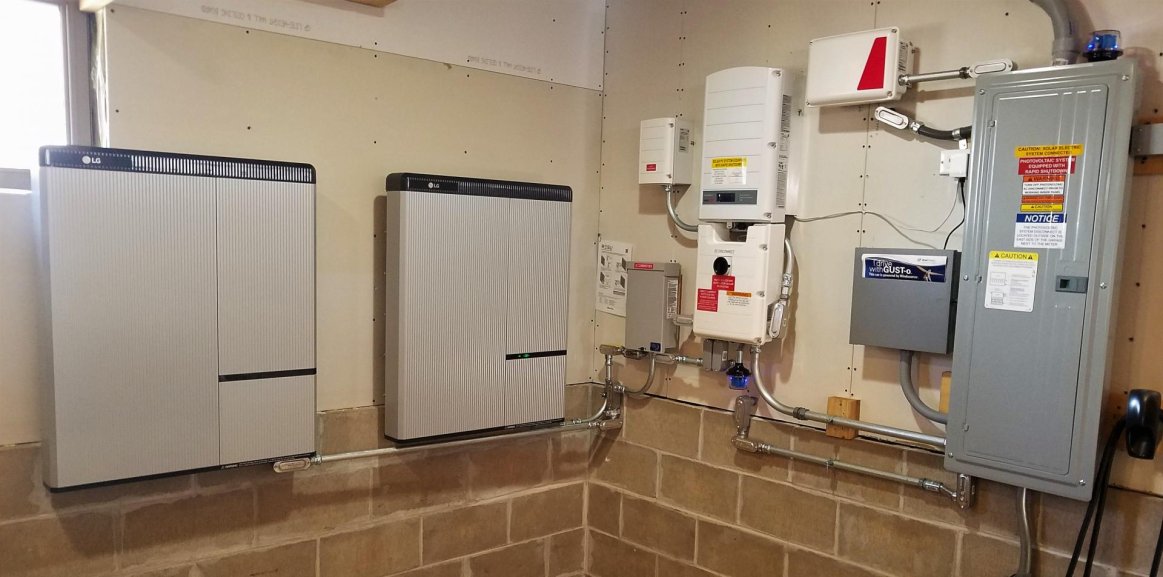
Residential storage has been booming across the United States. As some utilities fight against the rise in solar by changing their rate structures, and as natural disasters have been in increasing in frequency and intensity, storage has launched into the spotlight. Not only does storage make the grid more resilient, it also pairs perfectly with solar.
One of the most common residential storage solutions has been the LG Chem RESU lithium-ion battery with a SolarEdge StorEdge inverter. As many installers are already aware, there has been a massive shortage of LG Chem RESU batteries in the US distribution market since the beginning of July. The current news is that regular supply will return in Q1 of 2019. So why exactly is this inverter and battery combination so popular?
LG Chem + StorEdge Popularity
In his interview with Greentech Renewables, Barry Cinnamon, CEO of Cinnamon Energy and long-time solar advocate, outlined why he prefers the StorEdge and LG Chem solution over other storage systems.
"Today’s lithium-ion batteries have much fewer problems to worry about than batteries of the past. To the credit of LG Chem and SolarEdge, there are few mistakes that can be made with their system,” Cinnamon said. The ease of install is something many installers cherish about this system.
The popularity of SolarEdge in the residential space has also helped make this storage solution common. Installers who are using SolarEdge and want an alternative to the Tesla Powerwall are forced to use the LG Chem. Plus, as lithium costs continue to decrease, lithium-ion batteries have become a more viable storage solution (they are still 2-3x the cost of lead-acid batteries). Moreover, LG Chem has a lower cost than some of the other similar lithium-ion batteries, and the LG brand is attractive for many homeowners due to their familiarity with other LG products.
The RESU Shortage
While it is clear that the LG Chem RESU and StorEdge are a very popular duo, and that some of the biggest residential installers in the country such as Sunrun and Vivint both use LG Chem batteries, did excess demand for this storage solution cause the shortage? Not quite. According to a letter from LG Chem, the rise in demand for electric vehicles is at fault.

Alternatives to LG Chem
Given that there are still a few months left until we can expect normal supply of LG Chem RESU in the US distribution market, installers can pivot to other storage solutions to satisfy their customers in the meantime. BMZ offers several lithium-ion batteries up to 10kWh in size that can be used with SMA Sunny Boy Storage units. SimpliPhi, based in California, offers a 2.7kWh and 3.5kWh cobalt-free lithium iron phosphate battery which they claim is stackable up to the MW range. GS Battery's SLR, an Advanced Lead Deep Cycle battery capable of 5,000 cycles at 70% Depth of Discharge, is an attractive option for installers who want lithium-like performance at a fraction of the cost. All of these options are available with a SolarEdge optimized system; they just have to be AC-coupled. Finally, Darfon Electronics offers a hybrid-integrated 5kW Inverter with up to 10kWh of lithium-ion battery storage.
How Long will the Partnership Last?
At SPI this year, LG Chem announced that they were entering the residential energy storage system (ESS) market by providing a 5.0 kWh AC-coupled and 7.6 kWh DC-coupled solution through a Delta inverter. LG Chem noted that these ESS solutions are scalable through expandable battery packs, allowing them to be used in larger homes with bigger loads.
It seems as though LG is moving towards a strategy of the "LG-electrified" house, with LG panels, energy storage, appliances and entertainment. All products would ultimately be interconnected, giving the homeowner full control over their energy management.
SolarEdge, on the other hand, is also hinting that they will enter the ESS market, as they recently announced the acquisition of Kokam, a South Korean lithium battery manufacturer. Being reliant on LG Chem for their StorEdge inverters has proven to be a difficult decision, since the shortage of the former has impacted sales of the latter. By manufacturing their own batteries, if LG Chem chooses to focus on selling to the electric vehicles market instead of the residential energy storage space (which makes sense, given how electric vehicles like the Tesla Model 3 outsold BMW's entire lineup in August of this year and how countries like Denmark have banned the sale of gasoline and diesel vehicles by 2030), SolarEdge will not have to worry about equipment shortages anymore. By entering the lithium battery manufacturing space, it will be interesting to see if SolarEdge is looking to simply supply batteries for their own ESS, or if they want to diversify their business and also sell to electric vehicles.
Conclusion
As solar + storage keeps growing, it will be interesting to find out if this market will be driven by batteries that determine inverter systems (and vice-versa) as we have seen with LG Chem + StorEdge, or if the flexibility of brand-agnostic equipment will take over. In addition, as both LG and SolarEdge launch products or acquire companies to help them launch their own ESS, we may see this cherished duo come to an end.
With SB 700 being signed a few weeks ago (which extends California's Self-Generation Incentive Program for behind-the-meter energy storage projects), it is likely that residential storage interest in the Golden State will continue to increase. Other states may follow California's example, helping popularize storage projects even more. For questions on LG Chem pivots or storage systems in general, make sure to check out our dedicated Solar + Storage page and reach out to your Account Manager.